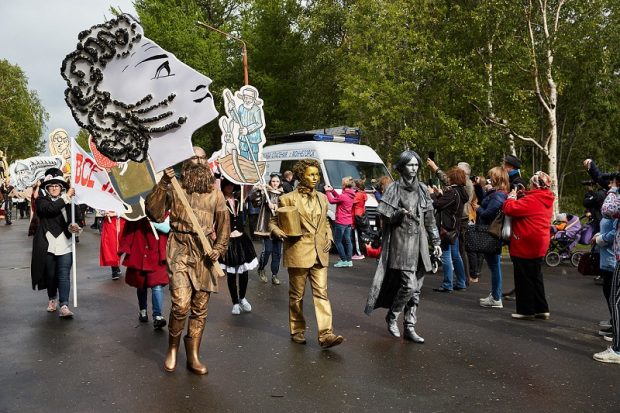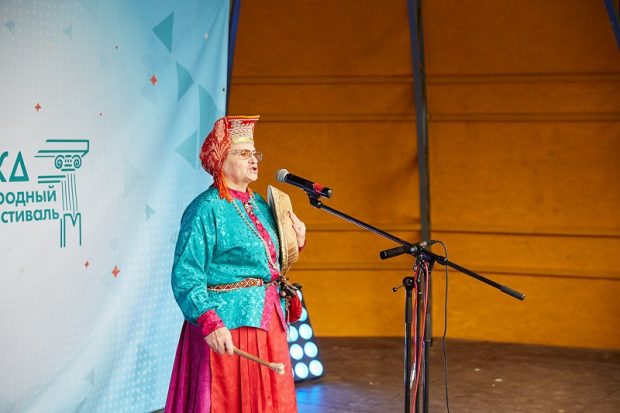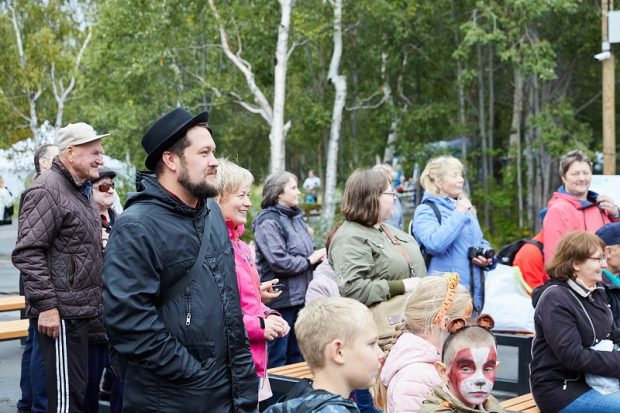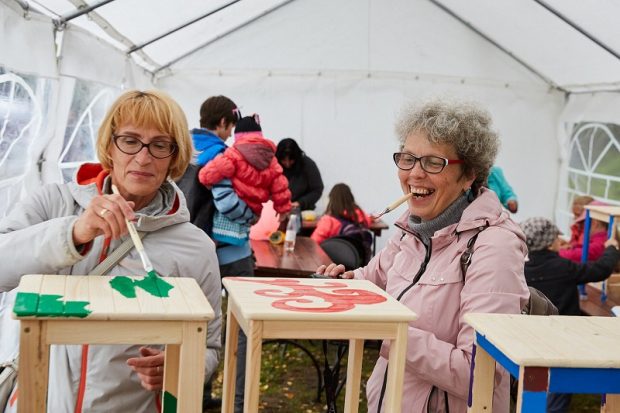The Taburetka festival was launched for the third time on the last weekend of August this year in Monchegorsk City near the Finnish border.
Taburetka as the gateway to world literature
The name of the event is dedicated to a 3-meter-high stool—a symbol of the city meaning the “first children’s stage” from which they used to sing songs and read poetry to their parents for the first time at home. In other words, the stool is somewhat the first bridge built for the kids connecting them to the world of literature, which provided them their first storytelling experience.
The organizers of the festival – the Zhivaya Classica Foundation – with the support of Nornickel Company have designed the event to be a celebration of literature and art in all forms—from a parade, competitions, and storytelling contests to educational workshops. The festival was open to everyone to join and participate on a free basis.
Among the invited special guests were a German writer, Hendrik Jackson, and Swiss artist Stéphanie Rosianu. The festival was also visited by a number of Russian public figures, such as film directors, artists, writers and actors.
Sami culture widens its borders
The Taburetka festival combines not just a colorful and mind-blowing parade of characters coming from world literature to the streets of Monchegorsk City and walking casually along with their authors, it also features the unique culture of the Sami people.
The festival becomes a large stage for Sami authors and writers, who represent a small indigenous population from the Scandinavian countries and northern parts of Russia.
This event started in 2016 when a Russian artist, Anna Tolkachova, together with her European colleagues – Inga Ravna Eira and Anna Karen Buljo – came up with an interactive installation, which responded to the actions of the audience. As soon as you touch one of the objects of the installation it will respond to you in the original Sami language, sounds of nature or pieces of poetry.
The installation was created with the views of northern valleys, endless fields and other breathtaking views. You could feel like nature itself is talking to you personally and responding in its own beautiful language. As a result, this installation was a big success as it demonstrated the heart of the Sami people, their unity and close relation to art and nature. The Sami artists have made the harmony tangible, which is basically impossible and contradicts common sense.
Sami language mirrors the world of poetry and it seems like both have the same vibe. The origin of the words is still hidden behind a mist of uncertainty. Some scientists propose that they originate from the ancient north European inhabitants. As if proving this theory, Sami folklore is rich in myths and fairy tales with legendary creatures living in the natural beauties of the north and heroic battles.
This year was also remarkable in terms of the development of Sami culture. The organizers of the Taburetka festival together with the Sami Writers Association (SGS) have made an executive decision to release the first literary Almanac of Works of Sami Writers ever.
Cosmic finale
To say that the finale of the festival was remarkable would not be sufficient to express the real feelings and experience after witnessing how a piece of poetry was sent into space in Morse code! It aims to reach the Crux constellation in 1300 years and hopefully return to Earth with a response, given that many of us believe that there is life out there in the universe.
The post Cosmic celebration of Sami culture at Russian festival appeared first on YourAmazingPlaces.com.
from YourAmazingPlaces.com https://ift.tt/2NnNyuU












0 comments:
Post a Comment